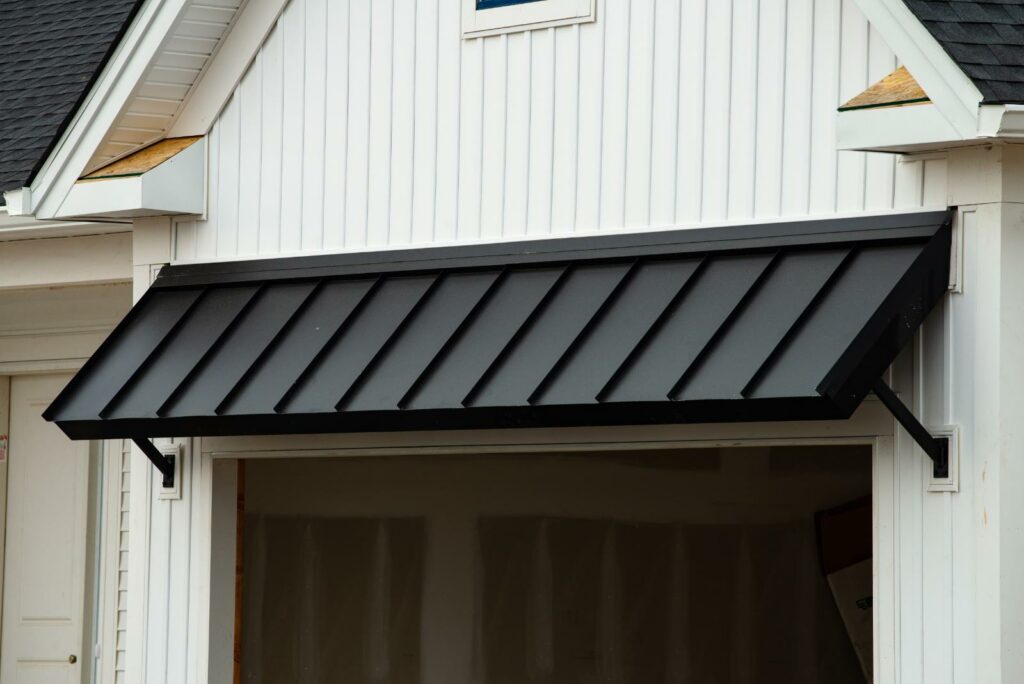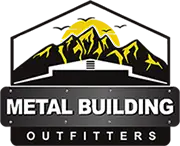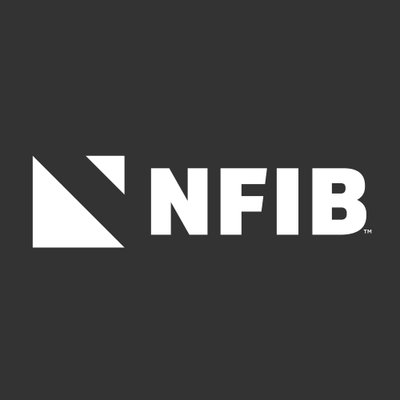
Contents
When it comes to constructing metal structures that stand the test of time, attention to detail is vital. From the choice of materials to the maintenance routine, each step plays an essential role in ensuring durability. But what if there were specific tips that could streamline this process, making it easier and more effective? By following these seven expert suggestions, you can not only increase the longevity of your metal structures but also optimize their performance and resilience for years to come.
Key Takeaways
- Choose weather-resistant steel grades like ASTM A588 and ASTM A242.
- Implement proactive inspection schedules to detect weaknesses early.
- Design structures with efficient load distribution for stability.
- Tailor corrosion prevention strategies based on environmental factors.
- Ensure regular maintenance of drainage systems for structural longevity.
Choose Weather-Resistant Steel
When selecting materials for creating durable metal structures, opt for weather-resistant steel. Weather-resistant steel, also known as corrosion-resistant steel or corten steel, provides excellent corrosion protection due to its composition and unique rust-like appearance. This type of steel is designed to develop a protective layer of rust on its surface, which prevents deeper corrosion and eliminates the need for constant painting or maintenance.
Steel grades play an important role in determining the level of corrosion protection and overall durability of metal structures. Different steel grades offer varying levels of weather resistance, strength, and weldability. Some common weather-resistant steel grades include ASTM A588 and ASTM A242, which are widely used in construction due to their high corrosion resistance properties.
When it comes to creating durable metal structures, choosing the appropriate steel grade is vital for ensuring longevity and structural integrity. Weather-resistant steel grades provide the necessary strength and corrosion protection to withstand harsh environmental conditions, making them ideal for outdoor structures such as bridges, buildings, and sculptures.
Prioritize Proper Coating
To ensure maximum longevity and corrosion protection for metal structures, the focus shifts to the critical aspect of prioritizing proper coating methods. Coating techniques play an important role in safeguarding metal surfaces against environmental factors that can lead to deterioration over time. When selecting a coating method, consider factors such as the type of metal being coated, the environment it will be exposed to, and the expected lifespan of the structure.
Surface preparation is a fundamental step before applying any coating to metal structures. Proper cleaning, degreasing, and roughening of the surface are essential to make sure the coating adheres effectively. Any contaminants left on the surface can compromise the adhesion of the coating, leading to premature failure and corrosion.
Choosing the right coating material is crucial for achieving durability. Different types of coatings offer varying levels of protection against corrosion and wear. Factors such as chemical resistance, UV stability, and abrasion resistance should be taken into account when selecting a coating that best suits the specific requirements of the metal structure.
Investing in high-quality coatings and applying them using proper techniques can significantly prolong the lifespan of metal structures. By prioritizing proper coating methods, you can ensure that your metal structures remain durable and corrosion-resistant for years to come.
Ensure Regular Maintenance Checks
How can the longevity and performance of metal structures be ensured through regular maintenance checks? Regular maintenance is vital for ensuring the durability and functionality of metal structures over time. By implementing a consistent maintenance schedule, you can prevent potential issues from escalating and maintain the structural integrity of the metal components.
To achieve this, consider the following key points:
Corrosion Prevention: Regular inspections allow you to identify early signs of corrosion and take necessary measures to prevent it from spreading. By applying protective coatings or addressing corrosive elements promptly, you can prolong the lifespan of the metal structure significantly.
Inspection Schedules: Establishing routine inspection schedules helps in detecting any structural weaknesses or defects before they become major problems. By conducting thorough inspections at predetermined intervals, you can address issues proactively and avoid unexpected failures.
Maintenance Record Keeping: Maintaining detailed records of all maintenance activities, including inspections, repairs, and upgrades, is essential for tracking the condition of the metal structure over time. This information can guide future maintenance efforts and provide valuable insights into the performance of the structure.
Design for Structural Integrity
When designing for structural integrity, focus on material selection and load distribution.
These two aspects play a vital role in ensuring the strength and stability of your metal structures.
Material Selection
Careful consideration of the material properties is crucial for guaranteeing the structural integrity of metal components in the design process.
When selecting materials for metal structures, keep the following in mind:
Corrosion Resistance: Opt for materials with high corrosion resistance to protect against environmental factors that can weaken the structure over time.
Strength-to-Weight Ratio: Choose materials that offer a balance between structural strength and weight to guarantee the structure can withstand intended loads without being unnecessarily heavy.
Fatigue Resistance: Prioritize materials with good fatigue resistance to prolong the lifespan of the structure, especially in dynamic loading conditions.
Load Distribution
To maintain structural integrity, distribute loads efficiently and evenly across metal components in the design of durable metal structures. Load balancing is essential for stability and longevity.
Proper stress distribution secures the strength of the structure, preventing premature failure or deformation. When designing metal structures, consider the types of loads the structure will bear and distribute these loads strategically to prevent concentrated stress points.
Utilize load-bearing calculations and simulations to optimize load distribution and confirm that each component functions within its intended capacity. By upholding uniform load distribution, you can minimize the risk of structural weaknesses and potential collapses.
Prioritize load distribution in your design process to create long-lasting metal structures that stand the test of time.
Opt for Quality Fasteners
For best structural integrity, always select high-quality fasteners when constructing metal structures. The choice of fasteners plays a vital role in the longevity and stability of the overall structure. Opting for inferior quality fasteners can lead to issues such as corrosion, loosening, and ultimately structural failure.
To guarantee the durability of your metal structures, consider the following:
Use Corrosion-Resistant Materials: Select fasteners made from materials such as stainless steel or galvanized steel to prevent rust formation. Rust can weaken the fasteners over time, compromising the structural integrity of the entire system.
Proper Sizing and Strength: Ensure that the fasteners you choose are of the correct size and strength for the intended application. Using undersized or weak fasteners can result in premature failure due to excessive loads or stresses.
Regular Maintenance and Inspection: Implement a maintenance schedule to inspect the fasteners periodically for signs of wear, corrosion, or loosening. Timely replacement of any compromised fasteners is essential to prevent structural issues.
Implement Effective Drainage Systems
To enhance the longevity and structural stability of metal constructions, the implementation of efficient drainage systems plays an important role. Proper drainage efficiency is essential in preventing water accumulation within the structure, which can lead to corrosion and structural damage over time. Effective drainage systems help channel water away from critical metal components, reducing the risk of rust and deterioration.
Corrosion prevention is a key benefit of a well-designed drainage system. By making sure that water doesn’t pool or collect in areas where metal is present, you greatly decrease the chances of corrosion taking hold. Standing water is a breeding ground for rust, especially in metal structures exposed to the elements. Implementing proper drainage solutions will safeguard your metal construction against this common threat.
When planning your drainage system, consider the layout and slope of the land to facilitate water flow away from the structure efficiently. Regular maintenance of gutters, downspouts, and other drainage elements is important to make sure they remain clear and functional. Investing in quality materials and installation for your drainage system is a proactive measure that can save you from costly repairs due to water-related damage in the future.
Consider Environmental Factors
Taking into account the influence of environmental factors is crucial when aiming to ensure the longevity and resilience of metal structures. Environmental impact plays a vital role in the deterioration of metal over time, making it essential to take these factors into account during the design and maintenance phases.
Here are three key points to keep in mind:
Climate Conditions: Different climates have varying effects on metal structures. For instance, coastal areas with high salt content in the air can accelerate corrosion processes. Understanding the specific climate conditions your metal structure will be exposed to allows for tailored corrosion prevention strategies.
Pollution Levels: Urban environments with high pollution levels can also hasten the corrosion of metal structures. Monitoring pollution levels and implementing protective coatings can mitigate the impact of pollutants on metal surfaces, enhancing their longevity.
Natural Surroundings: Factors such as proximity to vegetation or bodies of water can influence the rate of corrosion on metal structures. Organic matter like leaves or moss can trap moisture against the metal, leading to accelerated corrosion. Regular maintenance to remove such debris is essential for corrosion prevention.
Considering these environmental factors and implementing appropriate corrosion prevention measures can greatly extend the lifespan of metal structures, ensuring their durability and structural integrity over time.
Wrap-Up
By following these seven tips for creating long-lasting metal structures, you can secure the durability and reliability of your constructions for years to come.
Keep in mind environmental factors, prioritize maintenance checks, and choose quality materials to ensure a safe and sturdy built environment.
With careful planning and attention to detail, you can achieve exceptional longevity in your metal structures.
Recent Posts
Efficient Construction of Large Metal Warehouses
When it comes to the optimization of building substantial metal storage facilities, one must consider
Why Choose Energy-Efficient Metal Warehouse Construction?
When it comes to selecting the construction method for your warehouse, choosing energy-saving metal construction
What Is the Key to Efficient Metal Warehouse Construction?
When it comes to efficient metal warehouse construction, understanding the key elements that drive success


